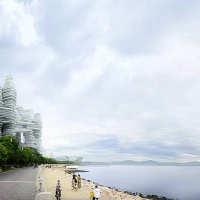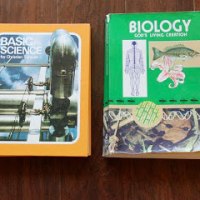Old sins
I caught a documentary on BBC the other day: Beautiful minds. This episode was about James Lovelock, the chemist who in the 1960s formed the (in)famous Gaia theory, and it reminded me of a paper I wrote whilst studying evolutionary biology many years ago. I remember being fascinated by Lovelock’s theory on a self-regulating planet, but my paper came down as rather critical of the groundbreaking concept. Ah, the arrogance of youth!
For those who aren’t familiar with the Gaia theory a short recap might be in order. Contrary to what the name implies, the Gaia theory has nothing to do with any ‘New age’ views of a planet being governed by a sentient being (the goddess Gaia), but rather is a theory trying to explain why the earth is not a smoldering lifeless ball of ash already.
It has been a well-known fact for many decades that our sun (like most stars) grow warmer as it ages. In fact, the sun is more than 30% hotter now than when life begun 3.7 billion years ago. But despite that increase in heating radiation, the surface of the earth is still averaging 13°C. How is this possible? Why hasn’t the earth continuously heated up towards a point where life can no longer be supported? A system must be in place to regulate the planet’s surface temperature. This is what the Gaia theory is all about. Lovelock proposed that living organisms on Earth regulate the biosphere’s temperature by the means of absorbing and emitting gases to the atmosphere.
In my paper, I remember, I expressed admiration for the brave idea, but came down on the side of the critics since I couldn’t see how any selfish organism (or group of selfish organisms) would be able to change the environment. Not even reading about his intriguing computer model Daisyworld convinced me.
Daisyworld
In Daisyworld, a planet not unlike our own is circling a star not unlike our sun, but the only lifeform that exists is a species of daisy. There are two variations: a dark one and a white one. In the beginning, when the sun is colder, Daisyworld is rather chilly and nothing grows at all. But as the sun warms up the planet, daisies start to germinate. Being a chilly planet, the dark daisies has an advantage in that they absorb more light and warm up quicker. Soon the surface is covered with dark daisies. As they cover larger and larger areas the heat they absorb start to heat the surface itself, and eventually it is warm enough for the white daisies to grow as well. When the temperature rises further the white daisies are suddenly better suited, since their white flowers reflect more sunlight than the dark ones. So the hotter it gets the more white daisies grow and the cooler the surface gets. If it gets too cold, more dark daisies will grow and temperature will rise again. Lovelock did run his model over a long period and the surface temperature always stayed withing a very narrow optimal range – perfectly suited for daisies – even with the sun’s temperature steadily increasing.
I was young and foolish then, I feel old and foolish now
The problem I had (apart from being arrogant) was that I couldn’t see any real life applications of the Daisyworld model. It would after all be a rather lucky fluke if an organism somehow would just happen to affect the environment in exactly the way that was needed for them to flourish. As I now understand it, Lovelock always envisioned it to be more about natural points of equilibrium than any kind of foresight or planning. Given a high enough density of organisms on a planet, life will inevitably affect the atmosphere, pushing it out of an inert passive state and into a chaotic state of flux. And as most chaotic systems with continuous input of energy, it will self-organise to the nearest point of equilibrium, even if it will then balance rather precariously on that narrow point. Think of weather systems forming tornados, or a cosmic disc of rotating gas forming a solar system.
So, finally, I get it. The earth’s biosphere is indeed a self-regulating system. It isn’t a sentient being planning for the future, but it’s self-regulating none the less. And, as we’re currently busy beating the crap out of it, what will happen next? As I see it, we have already pushed the system out of the current equilibrium and into a state of chaos, where it will fluctuate until it again settles at another point of equilibrium. It shouldn’t take more than a few million years or so..














Based on this post, I’m having trouble deciding how much we are doomed. I’m going back to the post where you are figuring out walking.
LikeLike
Oh, we’re SO doomed. Just ask Mr Lovelock himself. He’s a brilliant pessimist!
LikeLike
Thanks for pointing me to this post, Andreas! I had read about Daisyworld in connection with climate change, but not in the context of evolution as such. This gives me some more food for thought. 🙂
LikeLike
You’re welcome! It’s a fascinating theory.
LikeLike
Thank you Andreas for revisiting the reveered James Lovelock. Whatever the truth value of the Gaia theory might prove to be, I do think he stimulates the mind in a welcome way. And whatever the future of our planet, it certainly doesn’t hurt to contemplate over it.
LikeLike
Quite. He’s got some very interesting theories, that’s for sure.
And my youthful arrogance has now been replaced with ageing cynisism and just a pinch of naïve optimism. That must be an improvement, surely?
LikeLike